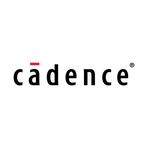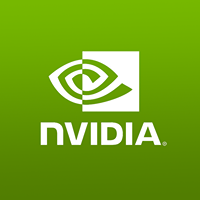Intel's New Dawn: Lip-Bu Tan Takes the Helm Amidst Turbulent Waters
March 14, 2025, 5:04 am

Location: United States, California, San Jose
Employees: 5001-10000
Founded date: 1988
Intel is at a crossroads. The semiconductor giant, once a titan of the industry, has seen its fortunes wane. With market share slipping and competition intensifying, the company has turned to Lip-Bu Tan, a seasoned veteran, to steer the ship. His appointment as CEO marks a pivotal moment for Intel, a chance to reclaim its lost glory.
Tan, 65, steps into the role on March 18, 2025. He brings a wealth of experience from his tenure as CEO of Cadence Design Systems, a company that provides essential software for chip design. His familiarity with the industry is a double-edged sword. While he understands the landscape, he also inherits a mountain of challenges.
The semiconductor market is a battlefield. Intel, once the undisputed leader, now finds itself in the shadows of competitors like Nvidia. The latter has surged ahead, capitalizing on the AI boom with its powerful graphics processing units (GPUs). Intel's struggle to keep pace has been stark. Over the past year, its stock plummeted by more than 60%. The company’s market cap now stands at a mere $89.5 billion, dwarfed by Nvidia’s soaring valuation.
Tan's predecessor, Pat Gelsinger, was ousted after a tumultuous four-year tenure. Under his leadership, Intel attempted to pivot towards becoming a foundry, manufacturing chips for other companies. However, this ambitious plan faltered. The company faced manufacturing delays and a decline in product revenue. Investors grew restless, demanding a turnaround.
With Tan at the helm, Intel hopes to chart a new course. His appointment has already sparked optimism among investors, with shares jumping over 12% in after-hours trading. This surge reflects a glimmer of hope in a company that has faced relentless scrutiny. Yet, the road ahead is fraught with obstacles.
One of Tan's immediate tasks is to tackle the AI chip market. Intel must develop an accelerator chip that can compete with Nvidia's offerings. This is no small feat. The AI landscape is evolving rapidly, and Intel cannot afford to lag behind. Tan must harness the company’s resources and talent to innovate swiftly.
Moreover, Tan's leadership style will be crucial. He has emphasized the need for calculated risks. In areas where Intel has momentum, he aims to double down. In sectors where the company is trailing, he plans to disrupt and leapfrog competitors. This approach could be the key to revitalizing Intel’s product lineup.
The company’s workforce has also been a point of contention. Recently, Intel announced the layoff of about 15,000 employees. This drastic measure underscores the urgency of the situation. Tan must navigate the delicate balance between cost-cutting and maintaining morale. A motivated workforce is essential for innovation.
As Tan reenters the board, he brings a fresh perspective. His previous experience as a board member gives him insight into Intel's inner workings. He understands the company’s strengths and weaknesses. This knowledge will be invaluable as he formulates a strategy to reclaim market share.
Intel's factories still represent a significant portion of global advanced manufacturing capacity. This infrastructure is a double-edged sword. While it provides a solid foundation, it also comes with burdensome debt. Tan must find ways to leverage these assets while addressing financial constraints.
The competitive landscape is shifting. Companies like Qualcomm have expressed interest in Intel, raising questions about its future. Speculation about potential spin-offs or sales of divisions looms large. Tan must quell these concerns and instill confidence in investors and stakeholders.
The semiconductor industry is not just about chips; it’s about vision. Tan must articulate a clear roadmap for Intel’s future. He needs to inspire confidence in a company that has lost its way. This requires transparency and decisive action.
The clock is ticking. Tan has a limited window to prove his mettle. Investors are watching closely. They want to see results, not just promises. The pressure is palpable.
In conclusion, Lip-Bu Tan's appointment as CEO of Intel is a significant moment in the company’s history. He inherits a legacy of innovation but also a landscape riddled with challenges. The semiconductor industry is unforgiving. Success will require bold moves, strategic thinking, and a commitment to excellence. As Tan takes the reins, the world will be watching. Will he be the captain to steer Intel back to its former glory, or will the company continue to drift in turbulent waters? Only time will tell.
Tan, 65, steps into the role on March 18, 2025. He brings a wealth of experience from his tenure as CEO of Cadence Design Systems, a company that provides essential software for chip design. His familiarity with the industry is a double-edged sword. While he understands the landscape, he also inherits a mountain of challenges.
The semiconductor market is a battlefield. Intel, once the undisputed leader, now finds itself in the shadows of competitors like Nvidia. The latter has surged ahead, capitalizing on the AI boom with its powerful graphics processing units (GPUs). Intel's struggle to keep pace has been stark. Over the past year, its stock plummeted by more than 60%. The company’s market cap now stands at a mere $89.5 billion, dwarfed by Nvidia’s soaring valuation.
Tan's predecessor, Pat Gelsinger, was ousted after a tumultuous four-year tenure. Under his leadership, Intel attempted to pivot towards becoming a foundry, manufacturing chips for other companies. However, this ambitious plan faltered. The company faced manufacturing delays and a decline in product revenue. Investors grew restless, demanding a turnaround.
With Tan at the helm, Intel hopes to chart a new course. His appointment has already sparked optimism among investors, with shares jumping over 12% in after-hours trading. This surge reflects a glimmer of hope in a company that has faced relentless scrutiny. Yet, the road ahead is fraught with obstacles.
One of Tan's immediate tasks is to tackle the AI chip market. Intel must develop an accelerator chip that can compete with Nvidia's offerings. This is no small feat. The AI landscape is evolving rapidly, and Intel cannot afford to lag behind. Tan must harness the company’s resources and talent to innovate swiftly.
Moreover, Tan's leadership style will be crucial. He has emphasized the need for calculated risks. In areas where Intel has momentum, he aims to double down. In sectors where the company is trailing, he plans to disrupt and leapfrog competitors. This approach could be the key to revitalizing Intel’s product lineup.
The company’s workforce has also been a point of contention. Recently, Intel announced the layoff of about 15,000 employees. This drastic measure underscores the urgency of the situation. Tan must navigate the delicate balance between cost-cutting and maintaining morale. A motivated workforce is essential for innovation.
As Tan reenters the board, he brings a fresh perspective. His previous experience as a board member gives him insight into Intel's inner workings. He understands the company’s strengths and weaknesses. This knowledge will be invaluable as he formulates a strategy to reclaim market share.
Intel's factories still represent a significant portion of global advanced manufacturing capacity. This infrastructure is a double-edged sword. While it provides a solid foundation, it also comes with burdensome debt. Tan must find ways to leverage these assets while addressing financial constraints.
The competitive landscape is shifting. Companies like Qualcomm have expressed interest in Intel, raising questions about its future. Speculation about potential spin-offs or sales of divisions looms large. Tan must quell these concerns and instill confidence in investors and stakeholders.
The semiconductor industry is not just about chips; it’s about vision. Tan must articulate a clear roadmap for Intel’s future. He needs to inspire confidence in a company that has lost its way. This requires transparency and decisive action.
The clock is ticking. Tan has a limited window to prove his mettle. Investors are watching closely. They want to see results, not just promises. The pressure is palpable.
In conclusion, Lip-Bu Tan's appointment as CEO of Intel is a significant moment in the company’s history. He inherits a legacy of innovation but also a landscape riddled with challenges. The semiconductor industry is unforgiving. Success will require bold moves, strategic thinking, and a commitment to excellence. As Tan takes the reins, the world will be watching. Will he be the captain to steer Intel back to its former glory, or will the company continue to drift in turbulent waters? Only time will tell.
